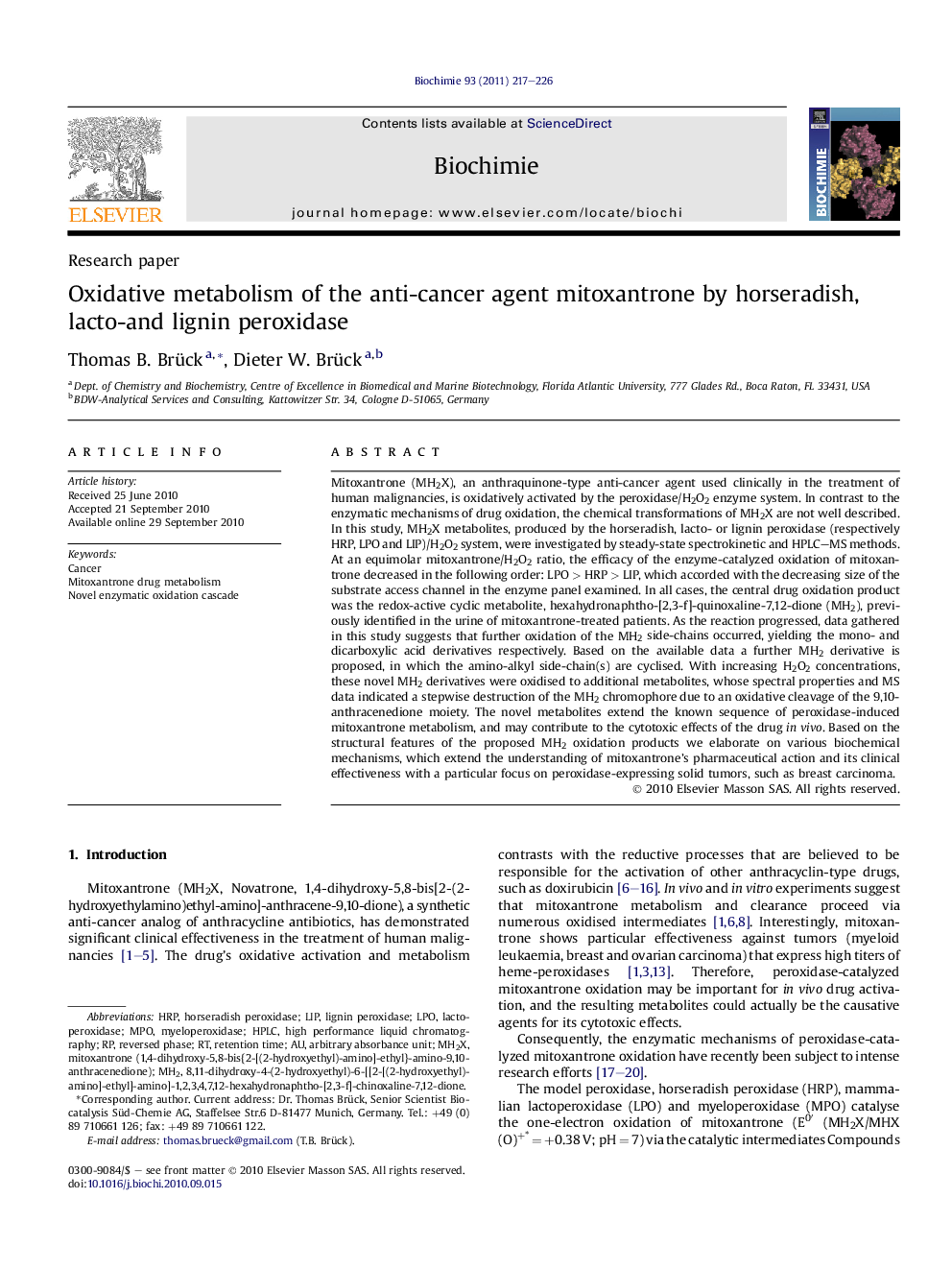| کد مقاله | کد نشریه | سال انتشار | مقاله انگلیسی | نسخه تمام متن |
|---|---|---|---|---|
| 1952504 | 1057212 | 2011 | 10 صفحه PDF | دانلود رایگان |

Mitoxantrone (MH2X), an anthraquinone-type anti-cancer agent used clinically in the treatment of human malignancies, is oxidatively activated by the peroxidase/H2O2 enzyme system. In contrast to the enzymatic mechanisms of drug oxidation, the chemical transformations of MH2X are not well described. In this study, MH2X metabolites, produced by the horseradish, lacto- or lignin peroxidase (respectively HRP, LPO and LIP)/H2O2 system, were investigated by steady-state spectrokinetic and HPLC–MS methods. At an equimolar mitoxantrone/H2O2 ratio, the efficacy of the enzyme-catalyzed oxidation of mitoxantrone decreased in the following order: LPO > HRP > LIP, which accorded with the decreasing size of the substrate access channel in the enzyme panel examined. In all cases, the central drug oxidation product was the redox-active cyclic metabolite, hexahydronaphtho-[2,3-f]-quinoxaline-7,12-dione (MH2), previously identified in the urine of mitoxantrone-treated patients. As the reaction progressed, data gathered in this study suggests that further oxidation of the MH2 side-chains occurred, yielding the mono- and dicarboxylic acid derivatives respectively. Based on the available data a further MH2 derivative is proposed, in which the amino-alkyl side-chain(s) are cyclised. With increasing H2O2 concentrations, these novel MH2 derivatives were oxidised to additional metabolites, whose spectral properties and MS data indicated a stepwise destruction of the MH2 chromophore due to an oxidative cleavage of the 9,10-anthracenedione moiety. The novel metabolites extend the known sequence of peroxidase-induced mitoxantrone metabolism, and may contribute to the cytotoxic effects of the drug in vivo. Based on the structural features of the proposed MH2 oxidation products we elaborate on various biochemical mechanisms, which extend the understanding of mitoxantrone’s pharmaceutical action and its clinical effectiveness with a particular focus on peroxidase-expressing solid tumors, such as breast carcinoma.
Journal: Biochimie - Volume 93, Issue 2, February 2011, Pages 217–226